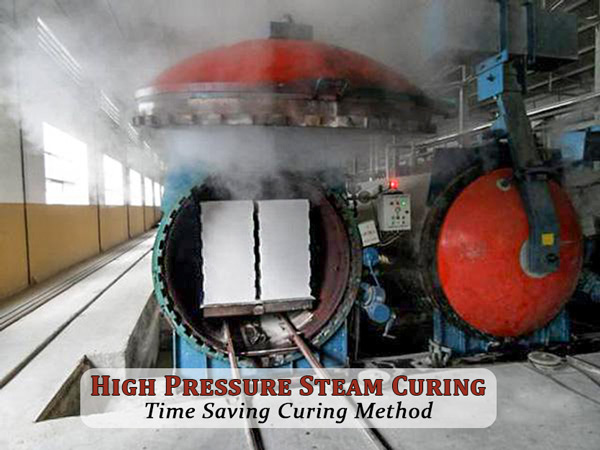Today, the construction industry has become one of the most booming industries in the world. This industry majorly depends on the production of concrete. Every year, approximately 10 billion tons of concrete is produced for various construction projects. Concrete is the most important and versatile material that is widely used in construction. To achieve a good shelf life of concrete, it should be prepared, placed and maintained well. After Placing of concrete, it needs to be cured to get the desired strength. As stated by ‘A.M. Neville’, Honorary Member of the American Concrete Institute, it is important to cure the concrete because the loss of water from concrete not only adversely affects the development of strength, but also leads to the plastic shrinkage, increases permeability, and reduces resistance to abrasion.
Curing is the procedure for promoting the hydration of product that contains cement. The main objective of curing is to keep concrete saturated. There are various methods of curing that helps concrete to achieve its desired strength. The desired strength of concrete is much more responsible for the life of house/building. To achieve the desired strength, it is very important to select the right method of curing. Selection method of curing depends upon the requirement of the concrete components i.e. the RCC slab needs sprinkling of water and/or ponding of water to cure, while precast concrete needs steam curing, etc.
Also Read:
Importance of Concrete curing.
Curing of Concrete: Things to Keep in Mind While Curing.
We have already discussed the various methods of curing. Let’s understand how we can do steam curing at high pressure.
Types of Steam Curing
In steam curing, there are two arrangements for the curing of concrete. The first one is steam curing at ordinary pressure, while the other is done at a high pressure. In ordinary pressure steam curing, a tarpaulin or PVC sheet is used to form the enclosed area around the concrete component that needs to be cured. To cure the concrete at high pressure, an air tight chamber is used.
To know the arrangements and procedure of steam curing, which is carried out at ordinary pressure, read the unique information on ‘steam curing at ordinary pressure’. Here, we will review the steam curing that is being carried out at a higher pressure.
High Pressure Steam Curing of Concrete

High Pressure steam curing is one of the concrete curing methods, especially used in prefabricated industries. It is more preferable where we need early strength gain in concrete and where early removal of formwork is desired or in cold weather conditions.
High pressure steam curing method is somewhat different from ordinary steam curing. In this method, curing is carried out in a closed chamber and is heated in steam at high temperature and high pressure. This process is also known as “Autoclaving”. The autoclaving process is specially practiced in curing of precast concrete products in the factory for lightweight concrete products. It is also used in the manufacturing of cellular concrete products, such as cellular blocks, precast panels, autoclaved aerated concrete (AAC) blocks etc.
Researchers from Goldsmiths, University of London, approved that in high pressure steam curing, concrete is subjected to a maximum temperature of about 175°C, which will correspond to a steam pressure of about 8.5 kg/Sq.cm.
The curing temperature in the chamber should not be changed until the concrete has reached its desired strength.
Advantages of High-Pressure Steam Curing
Following are the advantages of high-pressure steam curing process:
01. High-pressure steam cured concrete develops strength in a day, which is as much strong as the 28 days’ strength of normally cured concrete. The strength developed does not show retrogression. To know more, read ‘compressive strength of concrete’.
02. High-pressure steam cured concrete exhibits higher resistance to sulphate attack, chemical action, and freezing and thawing action. Hence, chances of occurrence of corrosion of concrete are less. To know the various reasons of corrosion in concrete, read ‘causes of corrosion in concrete’.
03. High-pressure steam curing also reduces the chances of efflorescence in concrete. To know more about efflorescence in concrete, read ‘tips to get rid of efflorescence of concrete’.
04. Drying shrinkage and moisture movement are the factors that are majorly responsible for the cracks in concrete. High pressure steam cured concrete exhibits lower drying shrinkage, and moisture movement. And hence, high pressure steam curing lowers the chances of cracks in concrete.
Summary
There are many factors which affect the strength of concrete, but curing is one of the most important as far as its strength is concerned. In almost all construction projects, curing is done with conventional curing methods. But in special cases like precast concrete, high pressure steam curing is much beneficial and is highly recommended by the concrete experts. The major advantage is that, it saves a lot of time.



